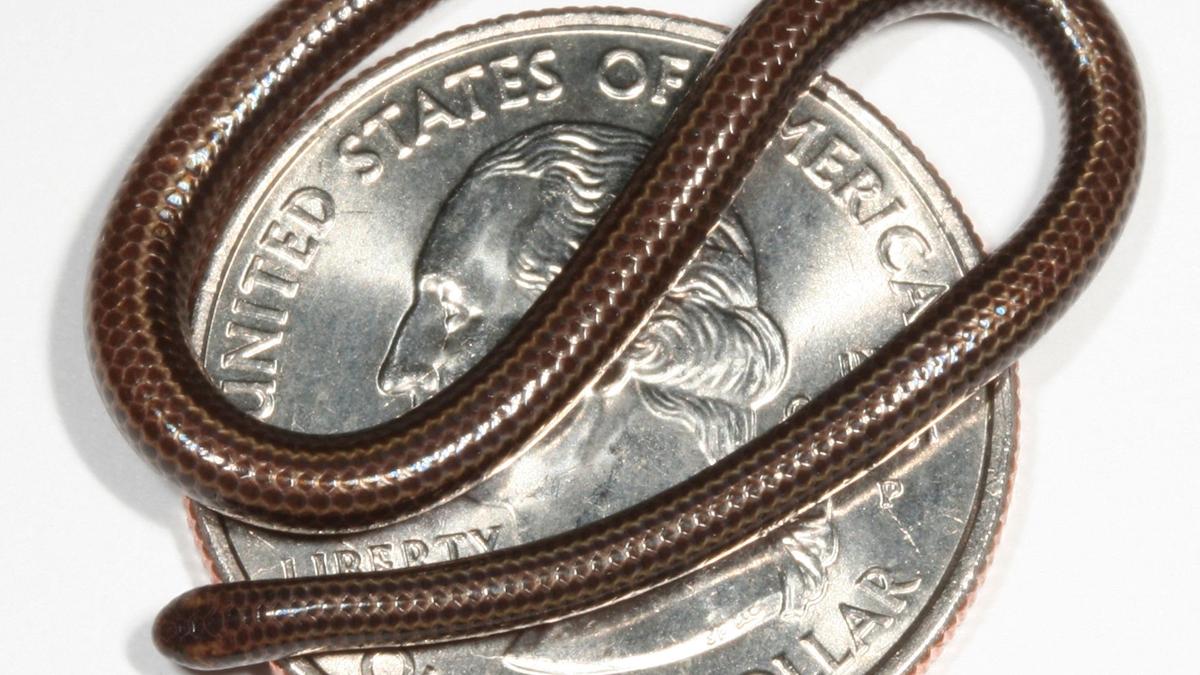Barbados Threadsnake (Tetracheilostoma carlae)

- 01 Aug 2025
In News:
The Barbados threadsnake, long considered lost to science, has made a startling comeback. This diminutive reptile—no longer than a coin—was rediscovered in Barbados in March 2025, nearly two decades after its last documented sighting. Its reappearance has reignited global interest in its conservation and the fragile ecosystems it inhabits.
Key Attributes & Taxonomy
- Scientific Classification: Tetracheilostoma carlae, family Leptotyphlopida.
- Size & Weight: Adults reach approximately 9–10 cm (3–4 in) in length and weigh ~0.6 g (~0.02 oz)—making it the world’s smallest known snake
- Physical Traits: Extremely slender—about as thick as a spaghetti noodle. Distinguished by pale orange dorsal stripes and a small scale on the snout
- Vision & Behavior: A blind, fossorial snake that burrows underground, especially hiding under rocks during the day.
- Diet: Feeds on termite and ant larvae—its petite jaws prevent it from consuming larger prey.
- Reproduction: Oviparous, laying only one large egg at a time, with hatchlings already about half the size of adults.
Rediscovery: A Significant Scientific Moment
- Context: The species had not been observed since 2006, and earlier specimens were often misidentified in museum collections.
- 2025 Rediscovery: During a March ecological survey in central Barbados by the Ministry of Environment and Re:wild, the snake was found under a rock near a jack-in-the-box tree. It was confirmed after microscopic and morphological assessment at the University of the West Indies.
- Reactions: This turn of events is hailed as a conservation triumph and a poignant reminder of Barbados’s biodiversity despite its heavily altered landscape.
Conservation Context & Implications
- Habitat Loss: Over 98% of Barbados’s primary forests have been cleared, leaving threadsnake habitats limited to a few square kilometers of secondary forests, particularly in the Scotland District.
- Threats: Loss of habitat and competition from the invasive Brahminy blind snake (Ramphotyphlops braminus), which reproduces asexually and may outcompete the threadsnake.
- Conservation Action: The rediscovery falls under the broader Conserving Barbados’ Endemic Reptiles (CBER) project. Future plans focus on mapping its range, safeguarding habitats, and preserving biodiversity as part of Barbados's compliance with the Kunming-Montreal Global Biodiversity Framework.
